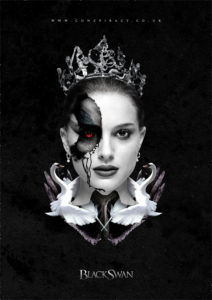Writers enter character for more than just dialogue
A writer needs to enter the characters in his/her novel. I’ve talked about this with other writers, but also found it useful to discuss it with artists from other fields. Two movies, “Black Swan” and “The Promise: The Making of Darkness on the Edge of Town,” illustrate just why it’s so important.
“Black Swan” revolves around the dilemma facing Natalie Portman as a ballerina cast as both the White Swan and the Black Swan in “Swan Lake.” The White Swan is no problem for her – she’s virginal and precise. But the seductive Black Swan is beyond her – she can’t loosen up and seems to be going crazy in her subconscious determination not to do so. Her director tries to drive her beyond the mere dance steps necessary for the role. The cliché would be to say he wants her to inhabit the role. But actually he wants the role to inhabit her.
That’s what makes the movie so compelling to watch as an artist. Because that’s the way it has to be. A writer has to be invaded and driven by his character. The other way around is too shallow, too distanced. Georges Simenon said that, when he wrote, “all day I am my character.” (He was famously unpleasant to everyone around him; I didn’t say this was good for your family life but it’s good for your writing.)
Be your writing
For a dancer like Portman’s character, there’s only one way to make the movements of your body convey emotion, and that’s to experience the emotion. To dance the Black Swan, you have to be able to step forward and say, “I’m the bloody Black Swan, dammit,” and for it to be true.
It’s the same for a writer. In the moment of writing about a particular character, all the writer’s reactions must come directly from the connection between the writer and the emotion at the heart of what he’s writing. If I ever experience a weak connection or a break, I can tell immediately: the words don’t come; or the most obvious character reaction suggests itself and instantly feels false.
It’s not easy to do. After all, writing a novel is not something you do when the feeling comes to you. You have to do it every day, plodding along like a marathon runner, keeping the momentum going. So you have to prepare yourself mentally and emotional for writing. Don’t just start tapping away. Clear your mind.
Writers enter character with breathing
I’ve developed techniques for entering into the character. They involve meditation and “breathing” through the heart, rather than the head. It opens you directly to the necessary emotion.
But how to set a broader mood for writing? In other words, beyond the individual characters to the tone of the novel overall.
In writing MOZART’S LAST ARIA, my historical novel about Mozart’s death, I talked with classical musicians about how they prepare to play. I needed to know this, so I could convey how Nannerl, Mozart’s sister, ought to approach the pieces she plays in the book. As it turned out, I discovered an interesting technique for my own writing.
Writers enter character with colors
Some classical musicians begin by identifying the color they associate with the piece they’re playing. Then they might ask themselves, “What season does this make me think of?” Before they play, they’ll have that color and that season in their head. It makes them receptive to the emotion with which they must infuse the piece.
Try doing the same thing when writing. It’ll take you beyond plot and any sense of what the chapter you’re writing ought to be “about” – those are just details — and leave you with the essential emotional content.
Don’t be too specific, too mechanical
I was struck by a similar idea in “The Promise,” a new documentary about the making of my favorite Bruce Springsteen album, “Darkness on the Edge of Town.”
In the documentary, which includes contemporary interviews and footage from the studio back in 1977, the man who mixed the album recalls the instructions Springsteen gave him. The Boss didn’t say, “I want a lot of bass on this track.” Nothing that specific. Instead, for example, he described one song thus: “In a movie, there’s a scene where you find the dead body, and there’s a shock to it. This song is that dead body.” The documentary cuts straight to the startling, jarring guitar riff that opens the song to which he was referring, “Adam Raised a Cain.”
So it seems Bruce Springsteen thinks in terms of a tone poem “behind,” as it were, his songs. I think that’s a profitable way to think of writing. Each chapter or section ought to have an image with which you associate it – one that isn’t necessarily taken from the events depicted in the book. It’s a way of anchoring you to the emotional tone you want to put across. It’ll keep you closer to the emotions of your characters. And it’ll make the book true.

 Gentleman and thug: researching my new historical novel
Gentleman and thug: researching my new historical novel
The Black Swan reminded me of the movie “A Beautiful Mind” – although the book was so much better – especially close to the end scene after the Swan kisses (drinks? eviscerates?) the director who reacts uncharacteristically, and others, example her alternative go to previously unknown “default mode” for the viewer. John Nash himself put his game theory into perspective late in life but only long after it had been universally utilized as a default null mode driving systems of all types into a trap. And is that the only way to the trap door?